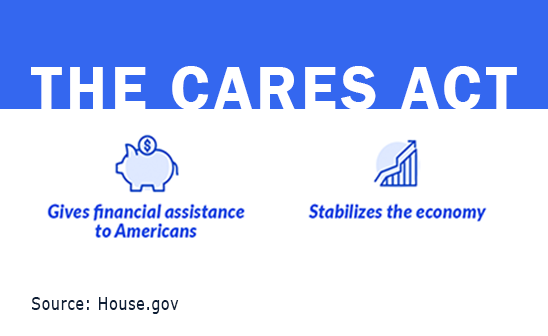
CARES Act’s Loan Forbearance is Working
As the pandemic was sinking into our collective consciousness a year ago, Congress, fearing economic calamity, allowed Americans to temporarily halt their mortgage and student loan payments.
By the end of October – seven months after President Trump signed the Coronavirus Aid, Relief, and Economic Security (CARES) Act – Americans had postponed some $43 billion in debt, including car loans and credit cards, which many lenders deferred voluntarily. Billions more are still being added to the total amount in forbearance.
Fast action in Congress “resulted in substantial financial relief for households,” says a new study by researchers at some of the nation’s top business schools. Their recent analysis found that the assistance went where it was needed – to “financially vulnerable borrowers living in regions that experienced the highest COVID-19 infection rates and the greatest deterioration in their economic conditions.”
When lenders grant forbearance they agree to waive their customers’ debt payments for a specified period of time. For example, Congress said borrowers could request that their payments on federally backed mortgages be deferred by six months to a year.
Although forbearance was less visible than the checks taxpayers also received under the CARES Act, the financial lift was equally potent. Customers who received loan forbearance saved an average of $3,200 just on their mortgages last year – this compares with $3,400 in stimulus checks for a family of four.
Congress also automatically suspended all payments on federal student loans, saving borrowers an average $140 last year, and President Biden has just extended the forbearance until at least Oct. 1. Lenders, in an attempt to prevent massive loan defaults on their books, voluntarily gave consumers a break last year on two types of loans that weren’t part of the CARES Act: automobile loans ($430 saved) and credit cards ($70 saved).
Forbearance is only temporary relief, because the missed payments will eventually have to be made up. But in a telling indication that borrowers didn’t want to fall behind, just a third of the people who asked for debt relief actually used it. In these cases, forbearance “acts as a credit line” borrowers can draw on – if they really need it.
The researchers – from Stanford, Columbia, Northwestern, and the University of Southern California – also found that the biggest users of the loan forbearance were the people hit hardest by the pandemic: lower-income workers, Blacks and Latinos, and residents of counties with high incidences of COVID-19.
However, 60 percent of the total dollars in forbearance went to higher-income households that started out with bigger debt balances – mortgages and student loans in particular.
Regardless of where the relief went, the researchers said it shored up the economy and prevented damage on the scale of the Great Recession. In 2021, loan delinquency rates were actually lower than in the pre-pandemic period – “a significant difference from other economic crises when delinquencies sharply increased with unemployment,” the researchers said.
Perhaps policymakers and lenders were effective in stemming the financial fallout from COVID-19, they said, because they had “internalized the lessons from the Great Recession.”
Read our blog posts in our ongoing coverage of COVID-19.
Squared Away writer Kim Blanton invites you to follow us on Twitter @SquaredAwayBC. To stay current on our blog, please join our free email list. You’ll receive just one email each week – with links to the two new posts for that week – when you sign up here.
Comments are closed.







Beware the law of unintended consequences. The CARES Act may be making lenders less likely to grant new loans. A better approach would have been to limit any forbearance to existing loans.